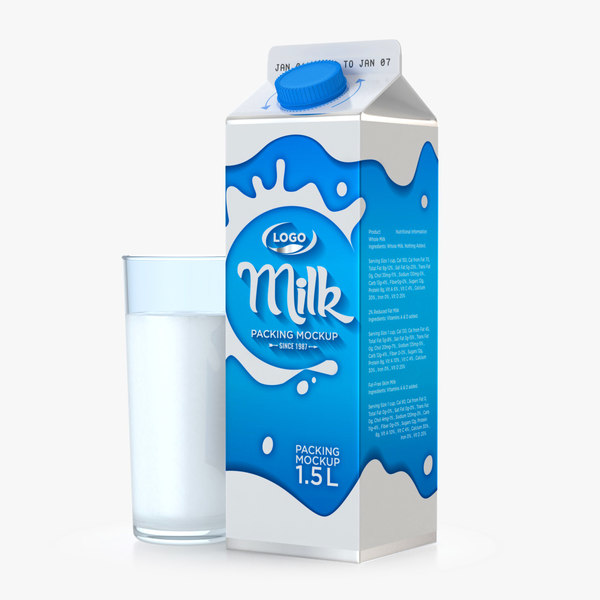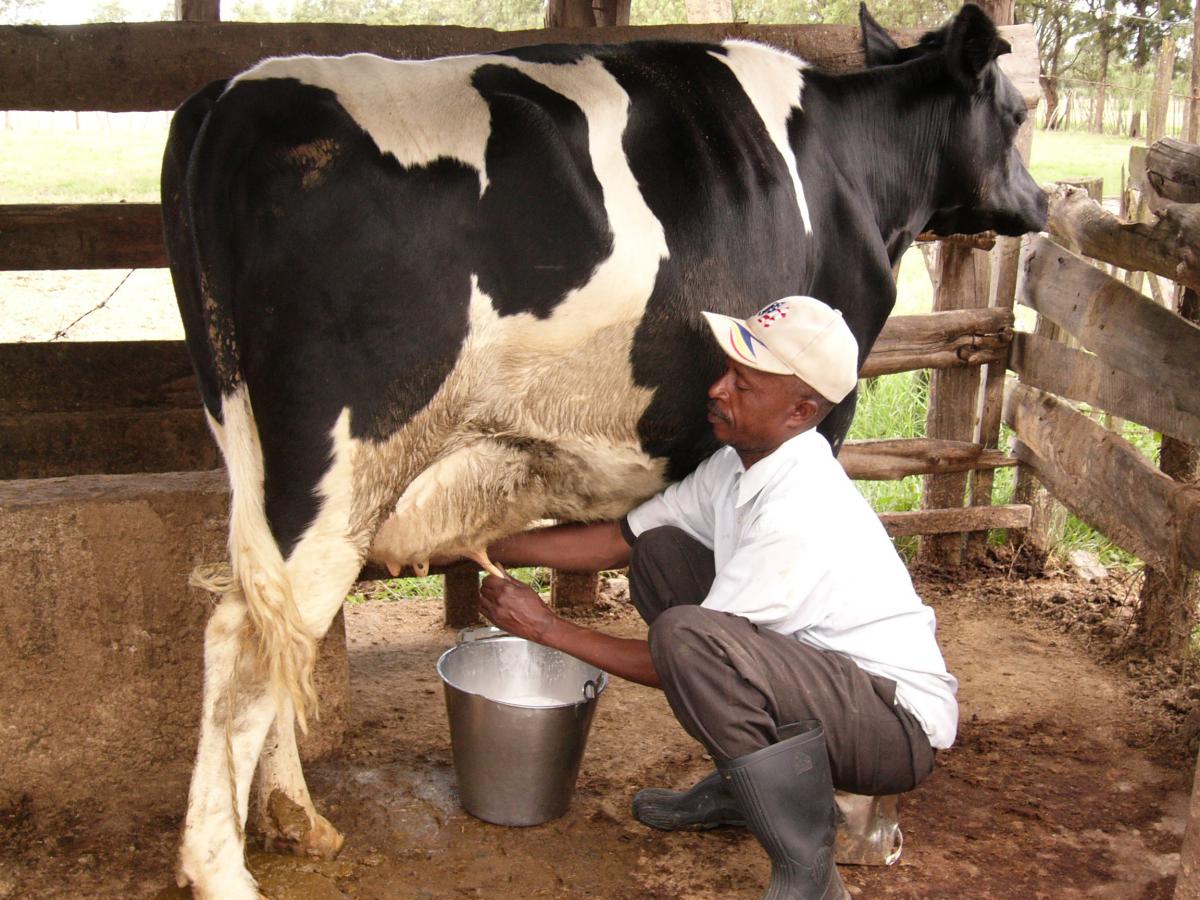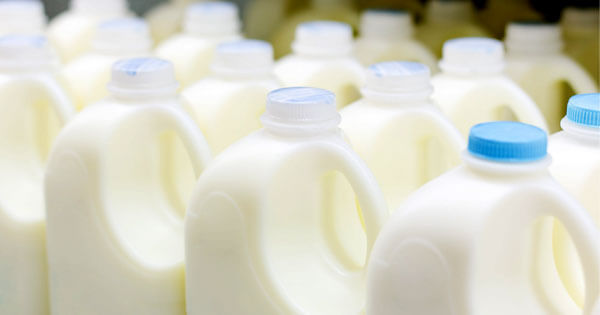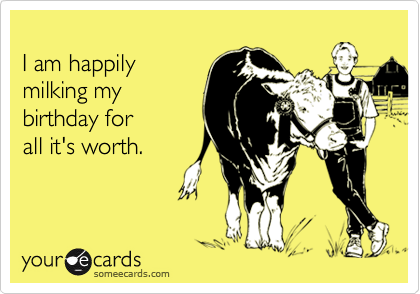Stephanie Lagona – Got Milk to Drink?
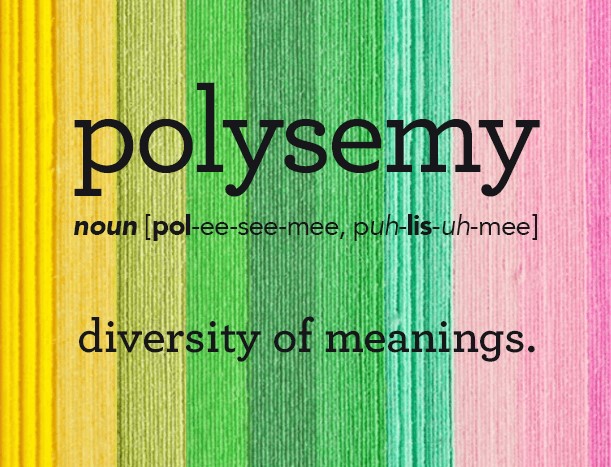
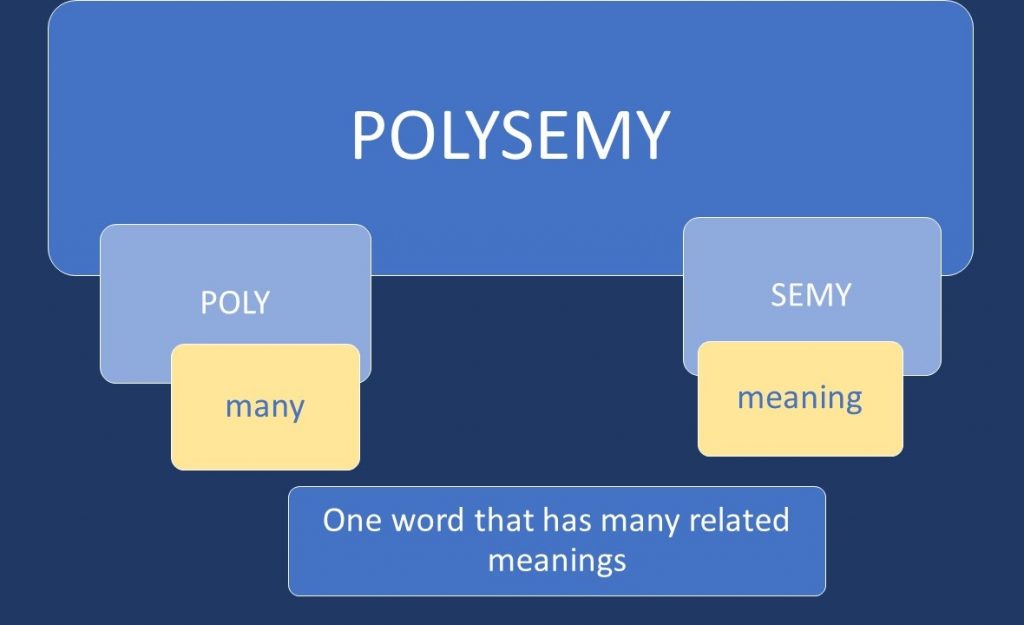
Milk for the baby. Mother’s milk. The land of milk and honey. Milking the cow. Milk him dry. Drink milk. Drink beer. Don’t drink and drive. Soft drinks. No drinks allowed. What are all these words? They’re polysemes. Polysemous language is everywhere! Poly- what, you say? A polyseme is a word that has more than one interrelated meaning (Lobner, 2013). English does this a ton. Wood and mouse are examples of polysemy (puh-LISS-uh-me). Wood comes from trees, which collectively are referred to as the woods. A mouse is a tiny mammal or a device used to navigate on a computer.

On this page, I will show the history of the words “milk” and “drink” and why they’re so versatile in the English language. I will also show which part of speech (POS) came first, the noun or the verb.
Methods
For this project, I used a variety of websites to collect data. I used Wikipedia to search for polysemes. Once I identified my terms, I then used the SIUE Lovejoy Library version of the Oxford English Dictionary to find the etymologies of my chosen words. I had a list of several polysemous words and had to pare down to just the two I chose. I decided on “milk” and “drink” because of their long histories, their interconnectedness, and because their meanings can greatly change based on the context of utterance (CoU).
Data analysis
Milk
Intro
According to the Oxford English dictionary, milk derives from the Old English meolc, which was spoken from around 450 CE to 1150 CE, and is of proto-Germanic origin. Producing milk is common to all mammals on Earth. We as humans understand its meaning in infancy, regardless of the delivery method of the substance. What we come to understand as we get older and more linguistically savvy is the vast subtleties in meaning depending on the part of speech, the placement in a sentence, the era it was used, and the CoU.
As a noun
Milk is defined as a whitish protein and fat rich liquid substance produced for the nourishment of infant animals (oed.com). Pregnant humans and animals are typically able to produce milk to feed their offspring. It’s produced in udders/breasts and in humans or human-raised animals, it can be served from a bottle.
An old meaning of milk was phrased as “on the milk”, meaning to lactate or an infant who was breastfeeding.
As a verb
The transitive verb “to milk” means to express liquid nourishment for infants from a mammary gland. To “milk a cow” means to place a machine or hands upon the udders of a cow and to manually/mechanically draw out the milk for human consumption. The original form, “ meolcode”, has been around since before the 1300s in the era of Old English.
As an idiom
American English is a very idiomatic language. For example, the phrase, “I’m gonna milk this for all it’s worth”, means the person is dragging out an experience for personal gain or benefit or to postpone something negative. Milk is an intransitive verb is this instance.
As early as 1628, milk could mean to extort or draw out (money, advantage, information) from a person or entity (oed.com). Milk can be used as a transitive verb to “milk the market/street” as in to control aspects of the stock market as to gain financially. This idiom was coined in the late 19th century.
The definitions of milk as an idiom and milk as a verb make them polysemous because removing/draining the milk from an animal for benefit and milking an illness or system means to remove or drain something for personal gain.
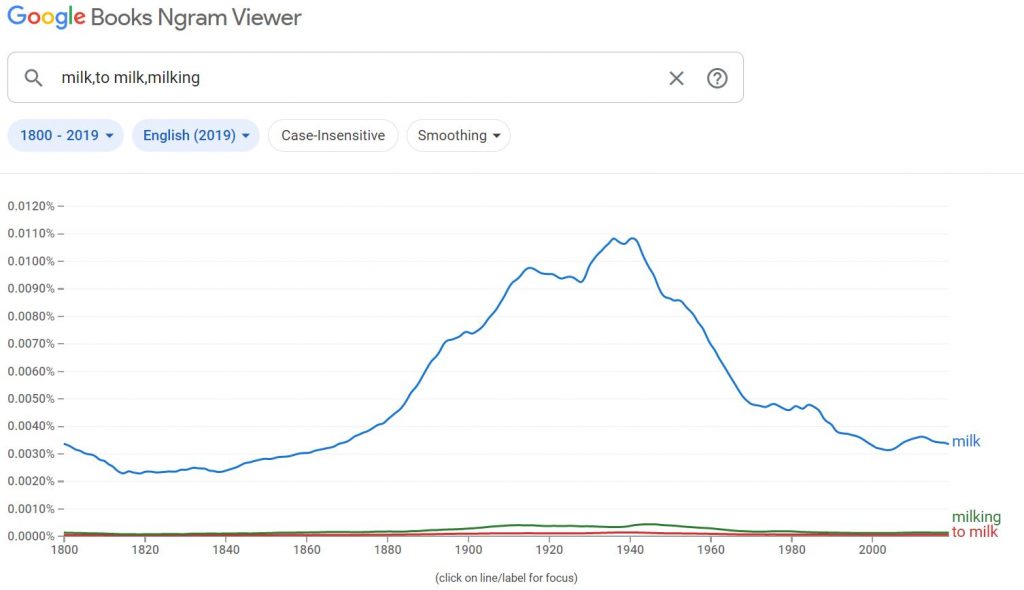
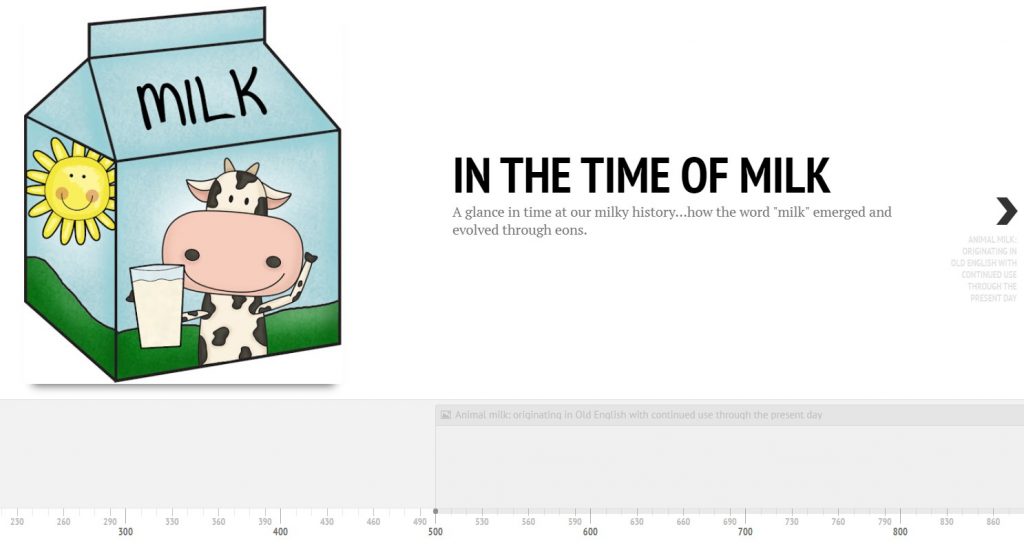
Drink







Intro
The word drink also shares some linguistic qualities as milk – it can be used as a noun or verb, and is idiomatic.
As a verb
Unlike milk, drink as a noun and a verb appeared in Old English at the same time, around the year 1000. As a transitive verb, it means to take a liquid into the stomach, to swallow, to imbibe (oed.com).
In English, there’s no phonetic differentiation between to drink alcohol or to drink anything else. In American Sign Language and Japanese, there are distinct words to indicate alcoholic versus non-alcoholic beverage consumption.
In 1865, “on the drink” meant a person who was in the habit of drinking alcohol in excess. It was rarely used, unless it was colloquial.
The earth and plants, which have no mouths or throats to swallow, can “drink up the rain”, because in this context to drink is to absorb.
As a noun
As a noun, a drink is a liquid taken in via the mouth for nourishment (oed.com). It was found as early as 1042 to mean an ”intoxicating alcoholic beverage” (oed.com). The context of which this term is used can change the meaning entirely, although the word “drink
sounds the same no matter how it’s intended. If I were to offer a room of adults over the age of 21 “something to drink”, I could mean anything from water to hard liquor. The CoU for this noun is important to understand the meaning. Conversely, if I ask a group of teenagers if they want “something to drink”, MY intent would not include serving alcoholic beverages, though they may be envisioning a keg of beer or a shot of whiskey. If I ask a mixed-age group the same question, the meaning for those over 21 are vast and varying, but drink is still relegated to mean “soft drink” for the younger crowd.
The idiom “in the drink” refers to a body of water. “I slipped on the dock and fell in the drink”. In the early 19th century U.S., the term “big drink” came into being, referring to a large body of water or river, like the Atlantic Ocean or the Mississippi. The term was always preceded by “the”.
Drink is a polysemous term because the definitions, though diverse, are all related to the presence of liquid.
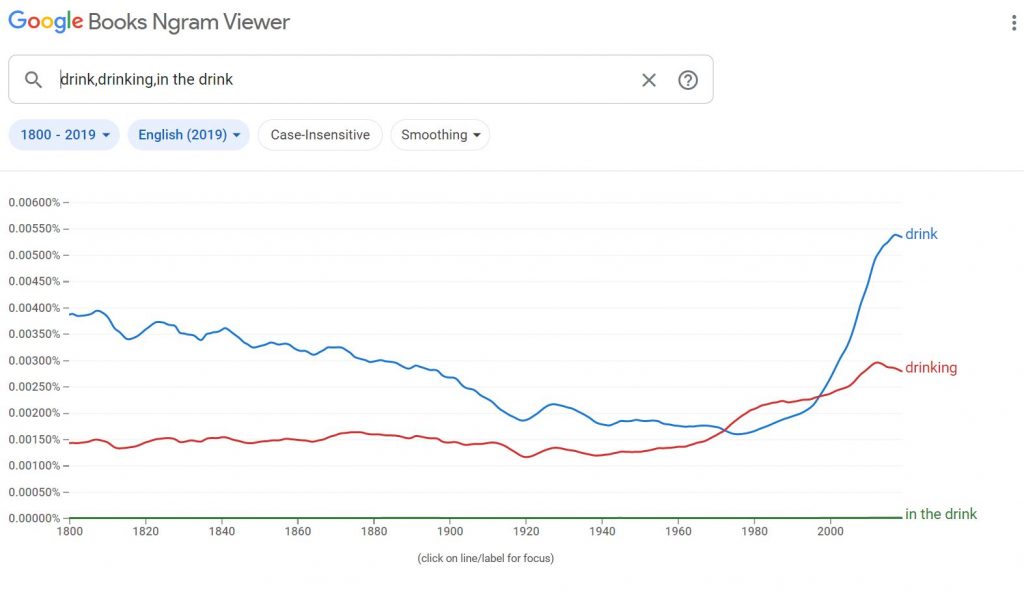
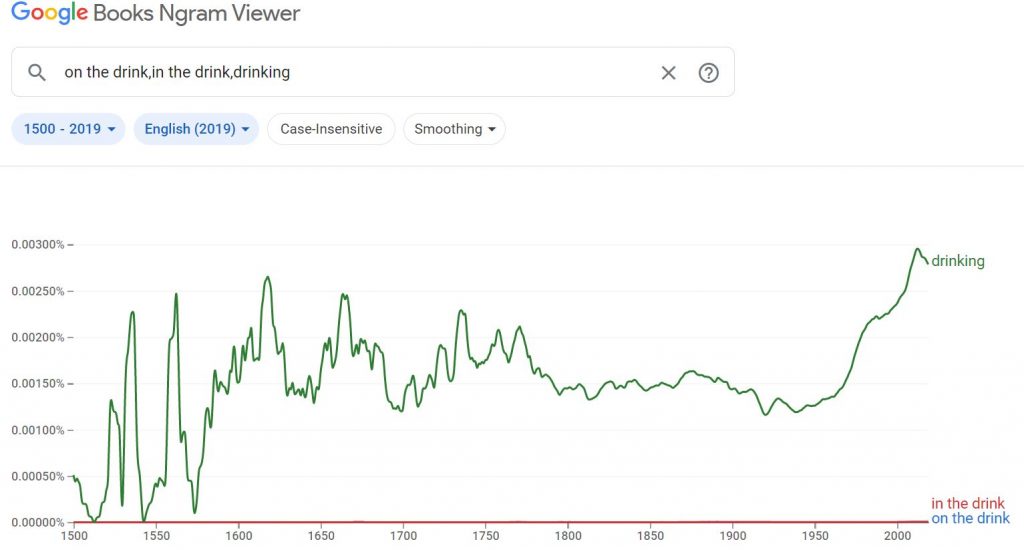
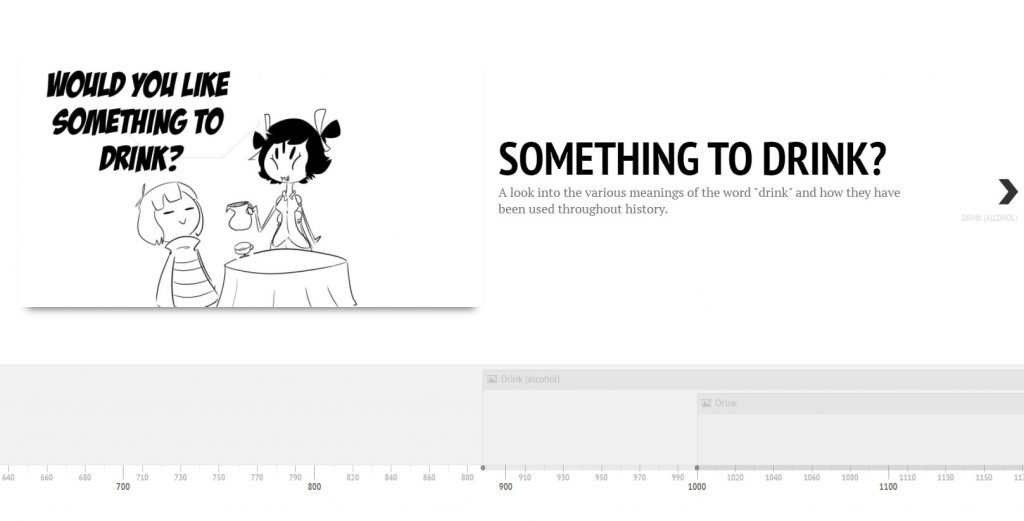
Sources Cited
“milk, n.1 and adj.” OED Online, Oxford University Press, March 2021, www.oed.com/view/Entry/118437.
“drink, n.” OED Online. Oxford University Press, March 2021. Web.
Lobner, Sebastian. 2013.
